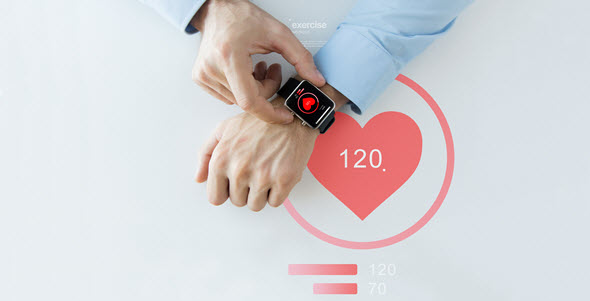by the bioMérieux Connection Editors
Healthcare is constantly changing, and digital advancements play a central role. 2019 saw great strides across the digital healthcare landscape, with technology helping on tasks such as patient scheduling, measuring blood pressure, and even drug development. We’ve rounded up three of the biggest digital advancements from the past year—read on to discover what technology to watch in 2020!
1. Artificial Intelligence (AI) & Machine Learning
In 2020, medical data is projected to double every 73 days. AI and machine learning present exciting opportunities for this increasing amount of data, which has the potential to transform healthcare. In 2019, AI helped to reinvent and reinvigorate the clinical landscape in key areas such as diagnosis, drug development, and patient experience.
Efficient diagnosis and reduction in medical error may be one of AI’s most exciting healthcare applications. AI is already helping to decrease errors and save lives, especially in cancer diagnosis and care. Machine learning and AI are working to help pathologists analyze mammograms and detect lung cancer in CT scans.
AI can provide efficiency, accuracy, and knowledge to the drug development industry, which often deals with sky-high development costs and research that can take humans thousands of hours. To reignite the drug development process, many targeted collaborations between pharma companies and AI specialists began this year. Moving into 2020, these innovative techniques will be something to keep an eye on, especially in regards to the fight against antimicrobial resistance, which is a major public health threat.
Lastly, AI has been used in 2019 to help provide seamless patient experiences in hospitals and clinics. A 2016 study found that 96% of patient complaints related to lack of customer service, negative front desk experiences, and confusion over paperwork. This year, AI has been used to help improve patient journeys through the healthcare system. For example, an Indiana physician group practice used AI to make EHR documentation faster and easier for physicians, maximizing face time with patients.
2. Wearable Technology
Over the past four years, the use of wearable technology such as smart watches and fitness trackers has more than tripled, and there doesn’t seem to be any sign of this trend slowing down—Business Insider Intelligence recently reported that more than 80% of consumers are willing to wear fitness technology.
Beyond just allowing users to count their steps, wearable technology companies have been innovating solutions that will positively impact healthcare and public health. For example, Apple released an API in 2018 to help researchers gather new insights into Parkinson’s disease through the Apple Watch.
Groundbreaking devices introduced in 2019 included wearable ECG monitors that can measure an electrocardiogram and send the reading to clinicians and wearable blood pressure monitors that can help determine how personal habits affect blood pressure.
3. Telehealth & Virtual Care
A recent physician survey found that physician adoption of telehealth increased 340% over the past three years, and estimates that by 2022, as many as 590,000 physicians will be using telehealth for virtual health visits. To support this widespread acceptance and enthusiasm for telemedicine, telehealth technology expanded in 2019.
Strategic partnerships between AI specialists and EHR companies allowed providers to embed video visits into their existing clinical workflows and launch video consultation from patient charts. Telehealth integration with electronic medical records will allow users to schedule appointments easily through the EHR platform.
Along the same lines as wearable technology, telehealth is also expanding to allow smartphones and selfies to measure blood pressure. Using transdermal optical imaging, the approach relies on slight changes in the optical characteristics of the skin from a few seconds of video of the face.
Digital Innovations Contribute to Value-Based Healthcare
The digital trends observed in healthcare this year, from AI to wearable devices to telehealth, revolved around a common theme of increased efficiency and supported the systematic shift to value-based healthcare. There is immense potential to leverage the ever-increasing amount of healthcare data to prevent and identify problems, unlocking value through better decision-making. Fundamentally, value-based care will require providers to operate differently, opening up an opportunity for innovative digital tools and technology to support.
Opinions expressed in this article are not necessarily those of bioMérieux, Inc.



